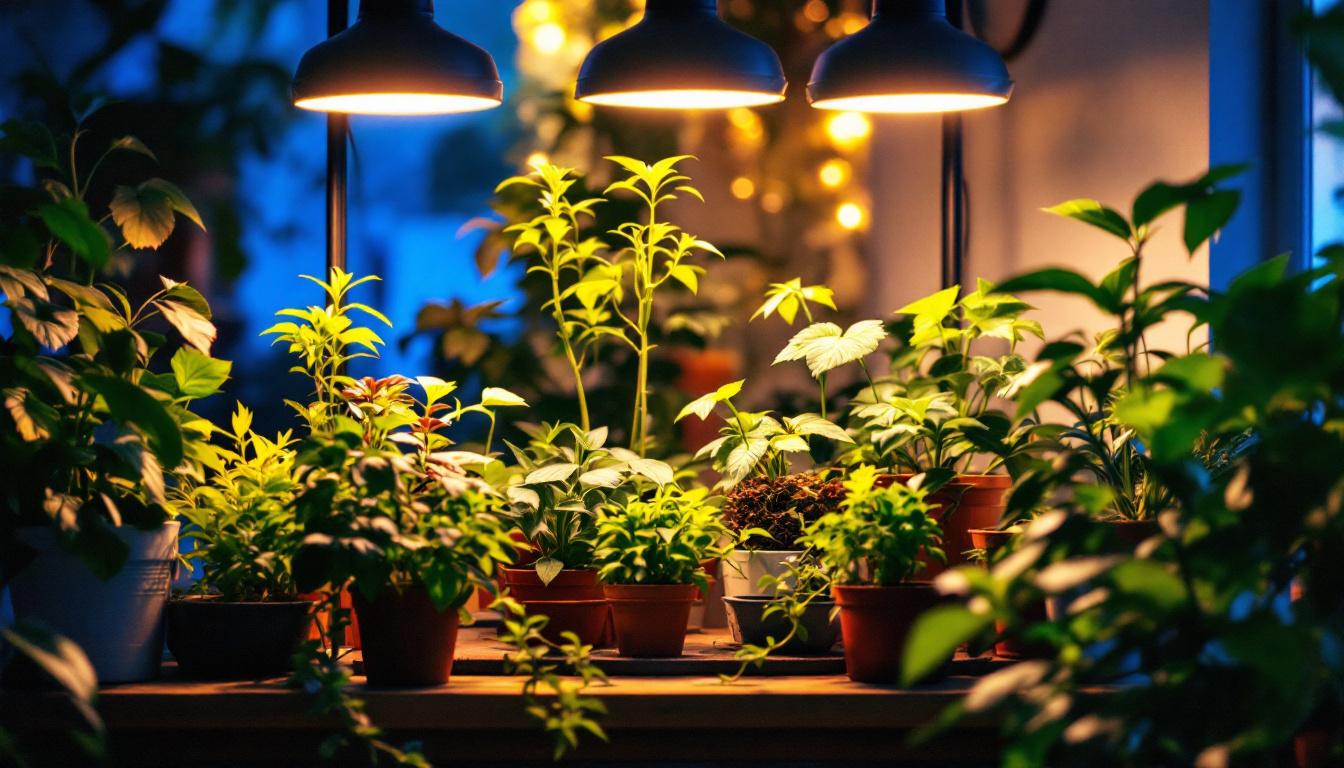
In the ever-evolving world of horticulture and indoor gardening, the importance of proper lighting cannot be overstated. For lighting contractors, understanding the nuances of professional grow lights is essential for delivering successful lighting projects. This article delves into the various aspects of grow lights, their benefits, and how they can transform indoor spaces into thriving ecosystems.
Grow lights are artificial light sources designed to support the growth of plants by emitting wavelengths that mimic natural sunlight. These lights are particularly beneficial in environments where natural light is insufficient or inconsistent. By providing the right spectrum of light, grow lights can enhance photosynthesis, promote healthy growth, and ultimately lead to higher yields.
The effectiveness of grow lights is rooted in their ability to emit specific wavelengths of light that are critical for plant growth. Plants primarily utilize blue and red light for photosynthesis. Blue light encourages vegetative growth, while red light is essential during the flowering and fruiting stages. Understanding these wavelengths allows lighting contractors to tailor their lighting solutions to meet the specific needs of different plant species. Additionally, the intensity and duration of light exposure can significantly influence plant development. For instance, extending the photoperiod can stimulate flowering in short-day plants, while reducing light exposure can help manage growth in certain species.
There are several types of grow lights available on the market, each with its unique advantages and applications. The most common types include:
In addition to these primary types, there are also specialized grow lights designed for specific applications. For example, some lights are engineered for hydroponic systems, providing tailored spectrums that enhance nutrient absorption. Others may focus on UV light emissions, which can promote certain beneficial plant responses, such as increased resin production in cannabis plants. Understanding the diverse options available allows growers to make informed decisions that align with their cultivation goals and environmental conditions.
Investing in professional grow lights offers numerous advantages for both lighting contractors and their clients. Understanding these benefits can help contractors make informed decisions when designing lighting systems for various projects.
One of the primary benefits of using grow lights is the significant enhancement of plant growth. By providing the right light spectrum, plants can photosynthesize more efficiently, leading to faster growth rates and healthier plants. This is particularly important in commercial settings where time and yield directly impact profitability. Moreover, the ability to control light intensity and duration allows growers to simulate seasonal changes, which can trigger specific growth phases in plants, such as flowering or fruiting. This level of control not only maximizes yield but also enables growers to cultivate a wider variety of plants that may not thrive under natural light conditions.
Modern grow lights, especially LEDs, are designed with energy efficiency in mind. They consume less electricity than traditional lighting options, which translates to lower utility bills for clients. Additionally, their long lifespan reduces the frequency of replacements, further contributing to cost savings over time. The advanced technology in these lights often includes features such as dimming capabilities and programmable timers, allowing for even greater energy management. As a result, clients can optimize their energy usage based on the specific needs of their plants, ensuring that they are not only saving money but also reducing their carbon footprint, which is increasingly important in today’s environmentally conscious market.
Professional grow lights can be used in a variety of settings, from small home gardens to large commercial greenhouses. Their versatility allows contractors to design tailored lighting solutions that meet the specific needs of each project. Whether it’s for hydroponics, aquaponics, or traditional soil-based gardening, grow lights can adapt to any environment. Additionally, these lights can be employed in diverse applications beyond just plant growth, such as in research laboratories for studying plant behavior or in educational settings to teach students about botany and sustainable practices. This adaptability not only broadens the market for lighting contractors but also enhances the overall value proposition for clients, as they can utilize the same lighting system for multiple purposes.
When selecting grow lights for a project, several factors must be considered to ensure optimal results. Lighting contractors should evaluate the specific needs of the plants, the size of the growing area, and the budget constraints of their clients.
Different plants have varying light requirements, making it essential for contractors to assess the specific needs of the species being cultivated. For instance, leafy greens may thrive under lower light levels, while fruiting plants often require more intense lighting. Understanding these needs will guide the selection of the appropriate grow lights.
The size and layout of the growing area play a crucial role in determining the type and number of grow lights needed. Contractors should consider factors such as ceiling height, plant spacing, and the overall design of the space. A well-planned layout will ensure that light is evenly distributed, maximizing the growth potential of the plants.
While investing in high-quality grow lights can lead to better results, it is essential to work within the budget constraints of clients. Contractors should present a range of options, highlighting the long-term benefits of energy-efficient and durable lighting solutions. By balancing quality and cost, contractors can provide value while meeting client expectations.
Proper installation and maintenance of grow lights are critical to their effectiveness and longevity. Lighting contractors must ensure that lights are installed correctly and that clients understand how to maintain them for optimal performance.
When installing grow lights, contractors should follow best practices to ensure even light distribution and effective coverage. This includes positioning lights at the appropriate height, using reflectors to maximize light output, and ensuring proper ventilation to prevent overheating. Additionally, it’s important to follow the manufacturer’s guidelines for installation to avoid voiding warranties.
To keep grow lights functioning at their best, regular maintenance is essential. This includes cleaning the fixtures to remove dust and debris that can block light output, checking for any signs of wear or damage, and replacing bulbs as needed. Educating clients on these maintenance tasks will help prolong the life of the lighting system and ensure continued plant health.
The field of grow light technology is constantly evolving, with new advancements emerging regularly. Staying informed about these innovations can help lighting contractors offer the best solutions to their clients.
Smart grow light systems are becoming increasingly popular, allowing users to control lighting schedules and intensity through mobile apps or integrated software. These systems can optimize light conditions based on plant growth stages, ensuring that plants receive the right amount of light at the right time. For contractors, offering smart lighting solutions can enhance the appeal of their services.
Recent advancements have led to the development of full-spectrum grow lights that can mimic natural sunlight more closely. Additionally, some systems now allow for adjustable wavelengths, enabling users to customize light output based on specific plant needs. This flexibility can significantly improve plant health and yield, making it a valuable option for contractors to consider.
Innovations in grow light technology also include integration with other systems, such as climate control and nutrient delivery systems. This holistic approach to indoor gardening allows for more precise control over growing conditions, resulting in healthier plants and increased productivity. Contractors who understand these integrations can provide comprehensive solutions that address all aspects of indoor gardening.
Professional grow lights are an indispensable tool for lighting contractors looking to deliver successful lighting projects. By understanding the science behind grow lights, their benefits, and the latest technological advancements, contractors can create tailored solutions that meet the unique needs of their clients. As the demand for indoor gardening continues to rise, investing in quality grow lights will not only enhance plant growth but also position contractors as leaders in the industry.
In a world where sustainability and efficiency are paramount, the role of professional grow lights in horticulture cannot be overlooked. By embracing these technologies, lighting contractors can contribute to the success of their projects while fostering a greener future.
Ready to elevate your lighting projects with professional grow lights that promise quality and efficiency? Look no further than LumenWholesale, where we offer an extensive selection of spec-grade lighting products at unbeatable wholesale prices. Say goodbye to inflated markups and hello to superior lighting solutions that meet the highest industry standards. With the convenience of free shipping on bulk orders, you can trust that you’re getting premium lighting at the best value — without any hidden fees. Make your next project shine and experience the best in wholesale lighting with LumenWholesale.

Discover the pros and cons of using outlets with switches versus alternative options in lighting installations.

Discover essential tips and best practices for lighting contractors working with flicker light bulbs.

Discover the essential compliance guidelines for LED pendant lighting that every contractor should know.

Discover the must-have tools and techniques for lighting contractors installing the Plugin Bright Wall Lamp Light in bathrooms.